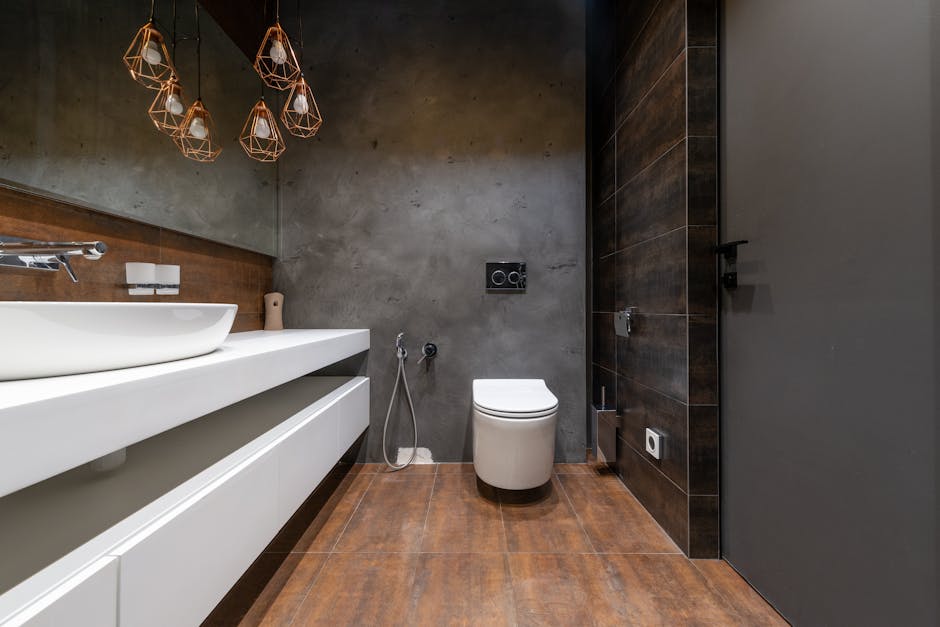Bathroom Remodeling
Bathroom remodeling can be one of the most exciting yet challenging home improvement projects you take on. Think about it, this is the space where you begin your day, unwind after a long one, and enjoy a few moments of solitude. So, why settle for outdated tiles, inefficient fixtures, or a layout that simply doesn’t work? A well-thought-out remodel can transform your bathroom into a sanctuary tailored to your needs and style.

But before you grab that sledgehammer or start scrolling through Pinterest for ideas, let’s break down
Assessing Your Needs and Setting a Budget
The first step in any remodeling project is understanding what you want versus what you need. Are you dreaming of a spa-like retreat complete with a soaking tub and heated floors? Or maybe your priority is functionality, like adding double sinks to reduce morning traffic jams? Start by asking yourself how the current space falls short. If storage is an issue, think about ways to incorporate more cabinetry or shelving into the design.
Once you’ve identified your goals, it’s time to crunch some numbers. A common rule of thumb suggests allocating around 5-10% of your home’s value to a bathroom remodel. If your home is worth $300,000, expect to spend anywhere from $15,000 to $30,000. Of course, this varies depending on whether you’re going for a simple facelift or a full-scale renovation. Always leave room in your budget for unexpected expenses, trust me, they’ll come up. That gorgeous tile you fell in love with might have higher installation costs than you anticipated.
Designing the Layout: Function Meets Style
When it comes to layout changes, think carefully before knocking down walls or relocating plumbing. Moving water lines and electrical wiring can significantly increase costs. If the existing layout works well but feels dated, cosmetic updates might be all you need.
Take lighting as an example. It’s often overlooked but can completely change how your bathroom feels. Layered lighting (such as recessed ceiling lights combined with wall-mounted sconces around the mirror) can make all the difference between a harsh glare and a soft, flattering glow. Need inspiration? Modern designs often use dimmable LED lights for versatility. They’re energy-efficient and allow you to set different moods depending on whether you're applying makeup or taking a relaxing bath.
If space is at a premium, consider creative solutions like wall-mounted vanities or pocket doors that save valuable square footage. Small bathrooms don’t have to feel cramped; smart design choices can make even the tiniest space functional and stylish.
Choosing Materials Wisely
Here’s where things can get ..the options are endless! Focus on materials that balance aesthetics with durability. Bathrooms endure high humidity levels and constant use, so opting for water-resistant and easy-to-clean surfaces is essential.
For flooring, porcelain tile remains a popular choice because of its resistance to water and scratches. If you’re looking for something warmer underfoot, luxury vinyl planks mimic the look of wood while being waterproof, a win-win! When it comes to countertops, quartz is an excellent low-maintenance option that resists staining better than natural stones like marble.
One trend gaining traction is mixing textures and finishes. Picture this: matte black fixtures paired with glossy subway tiles and natural wood accents. It adds depth without being Just be careful not to go overboard, too many competing elements can make the space feel chaotic rather than cohesive.
Fixtures and Features That Add Value
If you're investing in new fixtures, choose ones that will stand the test of time both in terms of quality and style. Dual-flush toilets are a great eco-friendly upgrade, they use less water without sacrificing performance. Similarly, low-flow showerheads help conserve water while still delivering strong pressure thanks to modern engineering advancements.
Speaking of showers, walk-in designs with frameless glass enclosures are a favorite for creating an open and airy feel. Pair it with a rainfall showerhead or body jets if you want that luxurious touch. Bathtubs are another consideration: freestanding models have become synonymous with elegance but only make sense if you actually enjoy baths! Otherwise, they’ll just end up collecting dust, or rubber ducks.
Don’t forget ventilation! Installing a high-quality exhaust fan is non-negotiable for preventing mold growth and keeping air fresh in such a damp environment.
The Finishing Touches
Once the big-ticket items are in place, it's time for those small details that pull everything together. Think mirrors with built-in LED lighting or towel bars that double as warming racks, practical yet indulgent touches that elevate your bathroom from functional to fabulous.
A fresh coat of paint can also work wonders without breaking the bank. Light colors tend to make small spaces feel larger, while darker hues add drama and sophistication if paired with good lighting.
Add some greenery with moisture-loving plants like ferns or orchids, they thrive in bathrooms due to the humidity and bring life into the space. And finally, don’t overlook accessories like soap dispensers or toothbrush holders; coordinated pieces make even mundane items look polished.
A Final Word on Planning
A successful bathroom remodel doesn’t happen overnight, it’s all about thoughtful planning and attention to detail. Whether you're tackling it DIY-style or hiring professionals (which I highly recommend for complex tasks like plumbing), take your time to research products and designs that align with your lifestyle and budget.
If you’re ready to take the plunge but need more inspiration or expert guidance along the way, reputable resources like Houzz.com offer endless ideas as well as connections to local contractors who specialize in bathroom remodeling projects.
Your bathroom should be more than just another room in your house, it should be your personal oasis where form meets function effortlessly. Plan well today so you can enjoy it for years to come!
